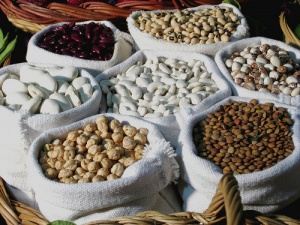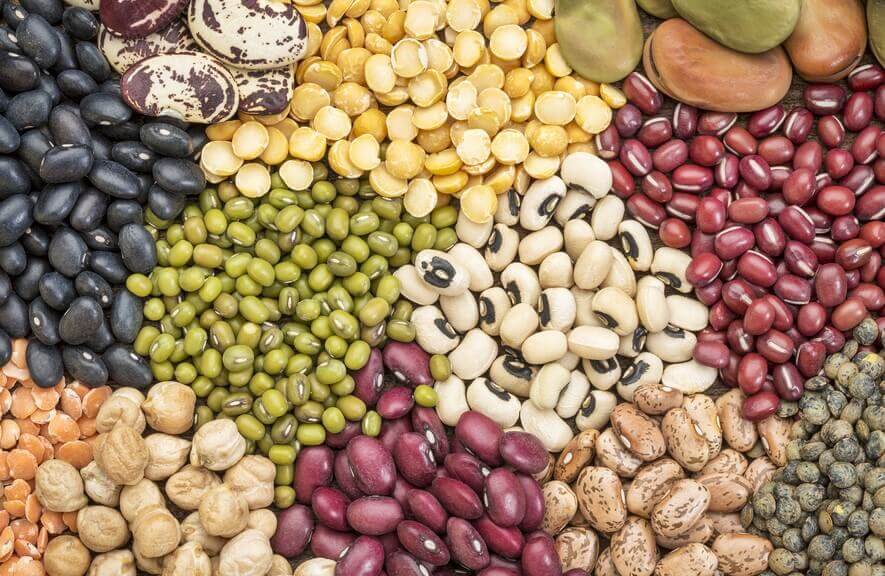What Kinds of Nutrients Can You Get from Legumes?

In adults, lysine keeps nitrogen levels balanced and helps form collagen, which slows down cellular aging. In addition, it also strengthens your immune system by helping the body produce antibodies.
Legumes are also a source of carbohydrates and oligosaccharides, which mean big health benefits. They create energy and the glucose that the body needs for a properly functioning nervous system. Legumes are also high in fiber, creating a feeling of fullness and aiding in bowel movements.
Legume’s benefits for the body
Besides oilseeds, legumes are low in fat and rich in unsaturated fatty acids. They reduce lipid build-up in the abdominal area and lower blood’s LDL cholesterol, or the bad cholesterol. Thus, this food group reduces the risk of developing cardiac problems and diabetes.
Consuming legume products ensures that your body obtains healthy minerals including calcium, iron, copper, potassium and zinc. Folic acid, niacin and vitamins B and E are also found in legumes.
Vitamins and minerals that we find in seeds prevent congenital problems in pregnancies and counteract anemia. High doses of copper stimulated enzyme activity in digestion and skin pigmentation. In addition, they contain phytochemicals that have antioxidant and anti-carcinogenic properties.
Also see: 3 Delicious Lentil Recipes
Great for meat-free diets

Lentils, beans, chickpeas, peas and fava beans all make up the diverse world of legumes. Though some of them have nutrients, they don’t boast a high biological value when eaten by themselves. You should combine them with grains and other food products to maximinze their benefits.
In addition, you can find amino-acids in grains such as methionine, cysteine and tryptophane, which are essential for the body if you mix the nutrients found in legumes and grains in your dishes. Their resulting biological value can be as high as that of meat. The same thing happens when you mix legumes and vegetables together.
Legumes pair well with any kind of food and make for a great option at any time of day. If you serve them along the side of chicken, fish or another kind of meat, you’ll end up with a very balanced and healthy diet.
As an example, soybeans are one the most complete legumes around in terms of protein, lipid and carbohydrate content. In fact, soybeans can provide the body with 8 or 10 essential amino-acids.
Complementing rice, flour, milk or eggs, soybeans can make up for lacking amino-acids. However, soybeans aren’t a very popular for consumption. However, the oil extracted from soybeans is very commercialized.
What other nutrients can legumes provide?

Eating legume products can prevent cardiovascular problems, improve lipid profile and control blood pressure. In addition, their consumption regulates platelets and sugar levels in the bloodstream as well as hindering inflammations. All of these benefits are thanks to their nutrients.
One of the most abundant nutrients is magnesium. This mineral is responsible for forming bony structures such as bones and teeth. They also boast carbohydrates such as starch and simple sugars, like glucose, stachyose, sucrose and fructose.
Legumes is that they have low sodium levels. Their low sodium levels makes them a food apt for those who suffer from problems related to the heart, obesity or diabetes.
How many legumes should you eat?
Medical specialists recommend around 60 grams for healthy adults. After cooking, their initial 60 grams become 200-250 grams. You can eat them 2 or 3 times a week. Hot legume dishes are great for winter while cold dishes are ideal for summer.
We recommend that you read: Benefits of Legumes and Tips for Easier Digestion
How to prepare legumes

Today, there isn’t any doubt that it’s worth looking into the best way to prepare legumes in order to get the most out of their nutrients. They only need to be boiled in water, ideally in a pressure cooker, in order to conserve their nutrients.
You should opt for dried legumes and leave them to soak for some time (8 to 12 hours) before cooking. You should salt them at the end or middle of cooking.
Soaking and changing the water will prevent flatulence or stomach upsets. Making the most out of their protein (or not) depends on how you prepare them and the foods with which you combine them.
All cited sources were thoroughly reviewed by our team to ensure their quality, reliability, currency, and validity. The bibliography of this article was considered reliable and of academic or scientific accuracy.
- Sima P., Vannucci L., Vetvicka V., B glucans and cholesterol. Int J Mol Med, 2018. 41 (4): 1799-1808.
- Valentin M., Mazeau PC., Zerah M., Ceccaldi PF., et al., Acid folic and pregnancy: a mandatory supplementation. Ann Endrocrinol, 2018. 79 (2): 91-94.
- Grillo A., Salvi L., Coruzzi P., Salvi P., et al., Sodium intake and hypertension. Nutrients, 2019.
This text is provided for informational purposes only and does not replace consultation with a professional. If in doubt, consult your specialist.








